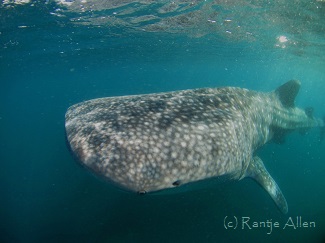Loading content - please wait...
Pygmy Killer Whale Encounter in Gorontalo
A group of lucky Malaysian divers enjoyed an unexpected encounter with a pod of Pygmy Killer Whales in Gorontalo’s deep blue waters. After a day of great diving on November 28th, we were heading back to our dock. Miguel’s Diving staff spotted a group of dorsal fins in the waters ahead of the dive boat. The cetaceans quickly began leaping and swimming in front of our speed boat. So, everyone assumed they were dolphins. Here in Gorontalo we see both Bottlenose and Risso’s dolphins. Happily, Mrs. Tan Peck Sim had her cell phone ready to record. She is co-owner of Scuba Symphony in Kuala Lumpur. She and her husband were on their third dive trip to Gorontalo with a group of friends. Watch her video on our Facebook page.
Not Dolphins After All
Our experienced dive staff were sure that those playful friends were not dolphins. So, we sent the video link to Dr. Benjamin Kahn. He is director of APEX Environmental’s Coral Triangle Oceanic Cetacean Program. That means he researches marine mammals like dolphins, porpoises and whales. Miguel’s Diving has been sending him reports of whale encounters in Gorontalo. Read news of our first report ten years ago. Based on this consultation
, Miguel’s Diving has determined that that we had a rare encounter with Pygmy Killer Whales.
Whale Beaching in the Past
This is not our first encounter with this marine mammal. In 2009 a single Pygmy Killer Whale beached itself in Olele Village. Locals and Miguel’s Diving staff tried to turn the whale back to sea. The picture in this blog was taken during the attempted rescue. However, it had numerous wounds from cutter sharks and did not survive. The dramatic photo on our Submerged Point Diving page of the whale surfacing at sunset was from that sad encounter.
Whale Highway
Pygmy Killer Whales love deep, warm waters in tropical locations worldwide. They are rarely seen, except near oceanic islands. However, whales passing Gorontalo seem to ignore the big land mass of Sulawesi because the seas here are so deep. Waters off Olele Village plunge below four kilometers. Along the same route taken those Pygmy Killer Whales, we have seen pods of False Killer Whales and Melon-headed Whales in other years. Maybe we have discovered a whale highway!
Keys to Identifying Pygmy Killer Whales
Pygmy Killer Whales (Feresa attenuata) can grow to a length of two to less than three meters. Size is the main reason that they can be confused with dolphins. However, their head is rounded with no beak or nose. They also have a distinct, dark cape with grey sides and a white patch on their belly. Their lips and chin are often white. They can have scarring around their head. One of the whales we saw clearly had the scarring and the white marks. They are also lively swimmers, as you can see from Peck Sim’s video.











